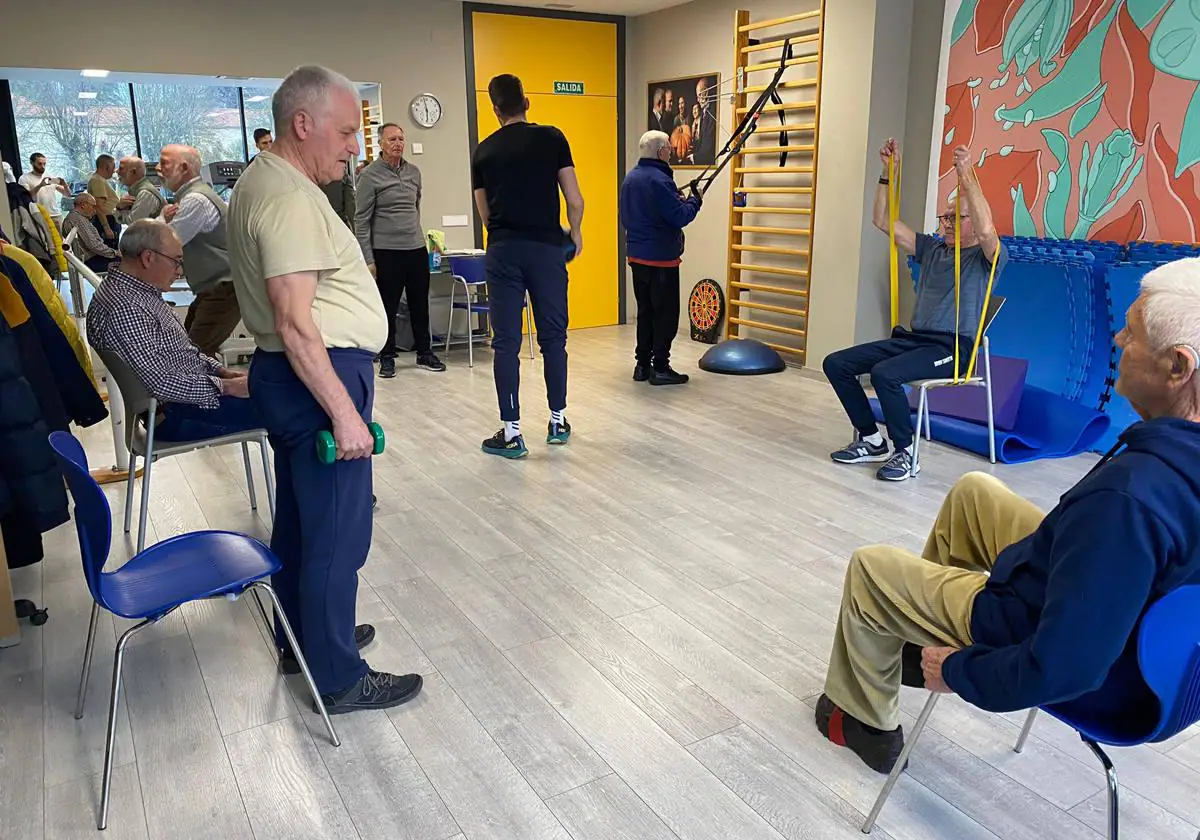Two institutions in Burgos are collaborating to slow the progression of Parkinson’s disease through exercise.

Isabella I University and the Parkinson’s Association of Burgos are collaborating on pioneering research that will slow the progression of the disease, demonstrating the importance of exercise in this group.
The Parkinson’s Association of Burgos, for its 25th anniversary, has strengthened its relationship with the Isabella I University through innovative research projects, and proof of this is the creation of a scientific study that closely examines how physical activity can influence the evolution of patients with Parkinson’s disease.
This collaboration allowed the association’s users to use the university’s specialized DEXA equipment, a state-of-the-art machine that measures body composition and provides valuable data for neurologists treating these patients.
Specialized DEXA university equipment, the most modern machine.
Elizabeth I University
Álvaro Fernández Castaño, manager of the association, noted that this research “opens up a world of opportunities for us at the research level that we cannot realize alone. “This is the start of something wonderful.”
In this project, it is important to know how a person with Parkinson’s disease develops when physical activity is included in their daily routine. “It is a chronic degenerative and disabling disease for which there is no cure and causes a sedentary lifestyle. We believe some of his progress can be reversed through exercise,” manager Parkinson Burgos said.
The initiative includes a 12-week exercise program in which university specialists work directly with association members at their headquarters to evaluate how a strength-training program can positively impact the quality of life of people living with Parkinson’s disease. The study aims to “scientifically demonstrate how physical activity can slow the progression of this neurodegenerative disease,” explain those responsible for the study.
The scientific study, developed by a team of physical activity and sports science teachers consisting of professors Sergio Alvarez, Iago Portela, Enrique Flores and Adrian Moreno, will attempt to demonstrate the importance of exercise in this group.
On the other hand, this study stands out for its use of IMU devices, which are typically used with high throughput and which have not yet been used in this population. With their help, in addition to validating certain physical tests for this population, they aim to facilitate the diagnosis of Parkinson’s disease, which would be an important milestone in the field of health, since there are currently no effective tools for its implementation.
This research project opens up a whole world of possibilities for the Parkinson’s Association in Burgos. “We have never been involved in a research project, and thanks to the Isabella I University, opportunities are opening up for us together with other neuroscientists who have seen that we are capable of being part of a project and are already offering us new challenges,” he said. University Manager of the Burgos Association. Alvaro Fernandez noted that in Spain there are not many centers with the characteristics of a headquarters in Burgos to carry out research projects, “in this sense we are a reference at the national level.”
Other collaborations
The collaboration between the Isabella I University and the Parkinson’s Association of Burgos began in 2020 with the conference “From Atapuerca to Modern Parkinson’s Disease”. These annual conferences have become a place to share medical advances and raise awareness about the disease. “We have a lot of conference views on YouTube from people who follow our conventions in Spain and Latin America,” said Alvaro Fernandez Castaño.
Over the 25 years of its existence, the association has provided assistance to more than 10,000 people suffering from Parkinson’s disease, becoming a national benchmark. Its 20 staff serve 150 people a day, both at the center and through outreach or online sessions in rural areas. Help is aimed not only at patients, but also at their family members who act as caregivers.
